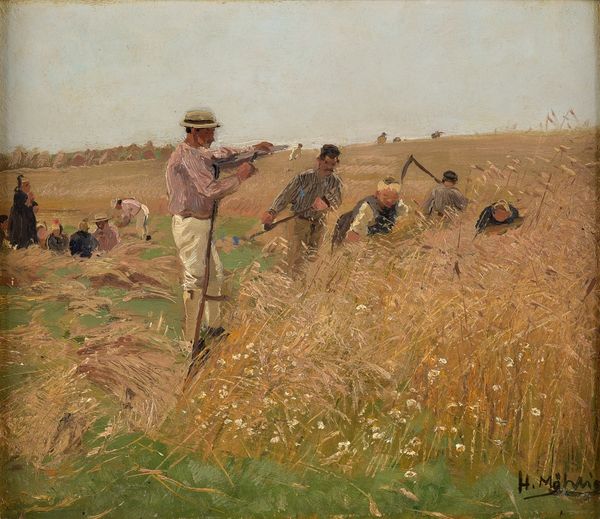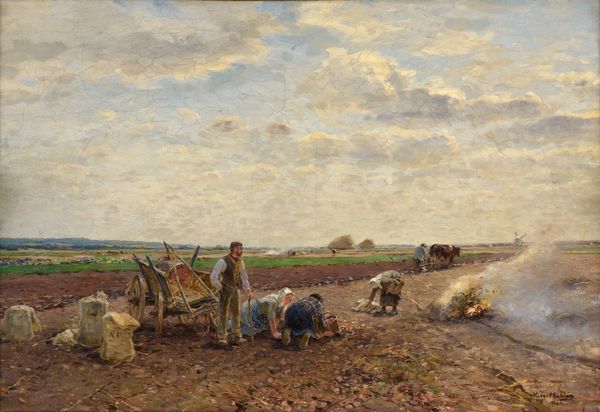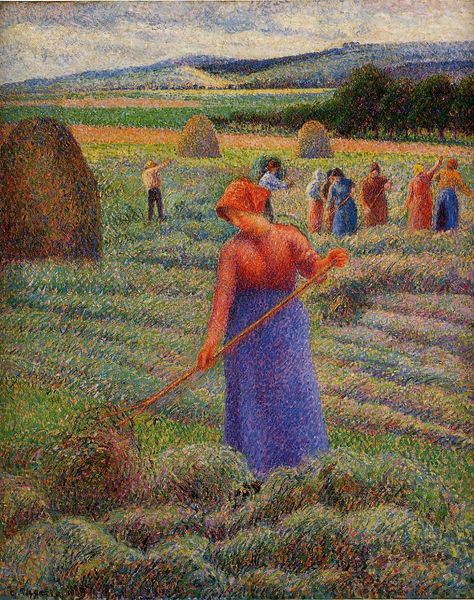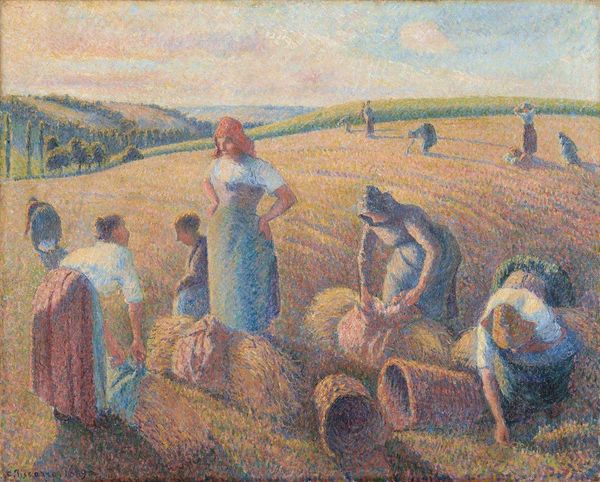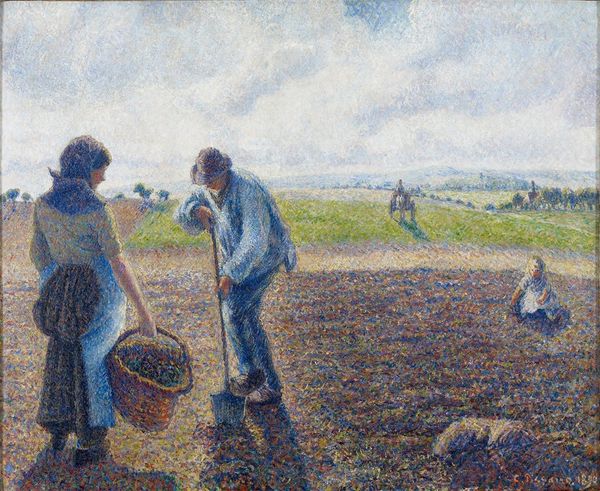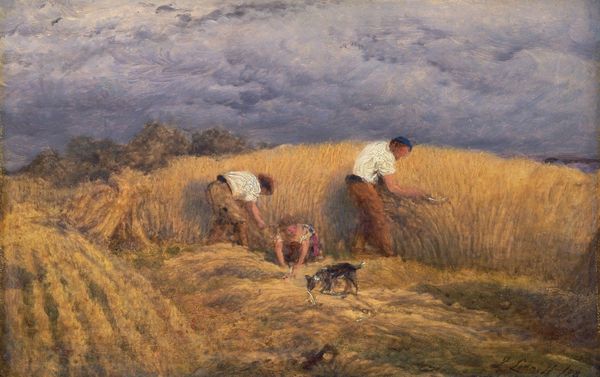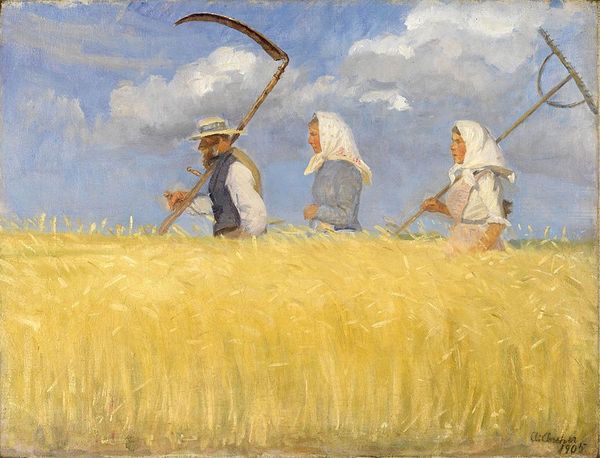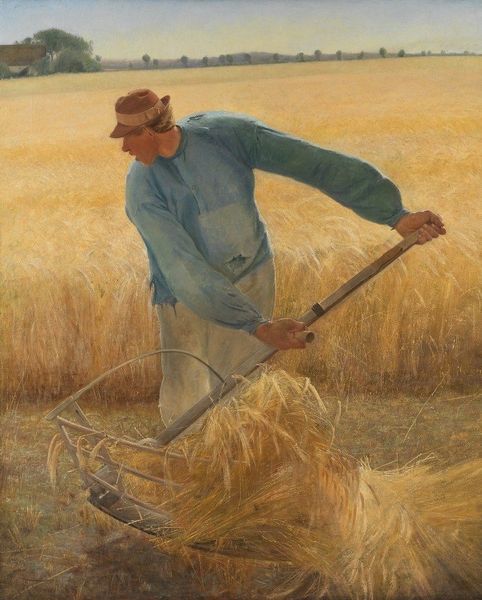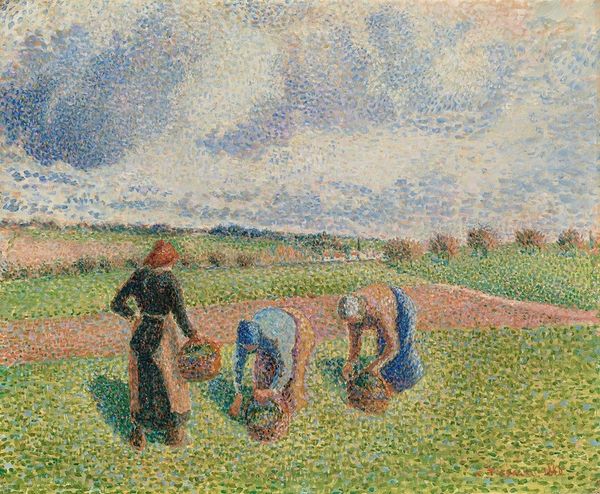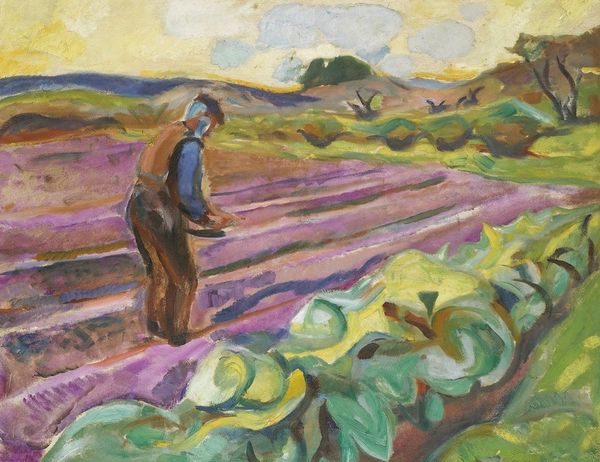
Copyright: Public domain
Editor: "Flax Harvesting," painted in 1904 by Emile Claus. The light is beautiful, but the muted colors and hazy atmosphere create a sense of intense heat and labor. What compositional elements stand out to you? Curator: Primarily, I am drawn to the use of line and color to convey movement and depth. Notice how Claus employs short, broken brushstrokes, especially in the foreground. These lines not only depict the flax but also guide the viewer's eye back into the landscape. How does the arrangement of figures contribute? Editor: They seem to form a sort of diagonal line, receding into the background. Is that deliberate, do you think? Curator: Precisely. This diagonal creates a visual pathway, leading us from the foreground workers to the hazy background, creating an illusion of depth. Further, observe the limited color palette: predominantly greens, yellows, and browns. Claus uses subtle variations in tone to differentiate the textures of the flax, the figures' clothing, and the distant trees. What impact does this limited palette have on the overall feeling of the painting? Editor: It feels very harmonious, like everything belongs together. It definitely contributes to that feeling of hazy heat, maybe even monotony. Curator: Indeed. There is a deliberate lack of stark contrasts, resulting in a harmonious, unified composition. Consider how this adherence to formal elements reflects Claus's engagement with Impressionist principles. The brushwork and color contribute to an overall optical experience rather than a detailed narrative. Editor: I see that now. Focusing on the lines and colors gives you a totally different appreciation. Curator: Exactly, by dissecting the composition through these elements, we reveal how "Flax Harvesting" achieves its evocative effect. It encourages a different lens on even simple subjects like harvesting flax.
Comments
No comments
Be the first to comment and join the conversation on the ultimate creative platform.


